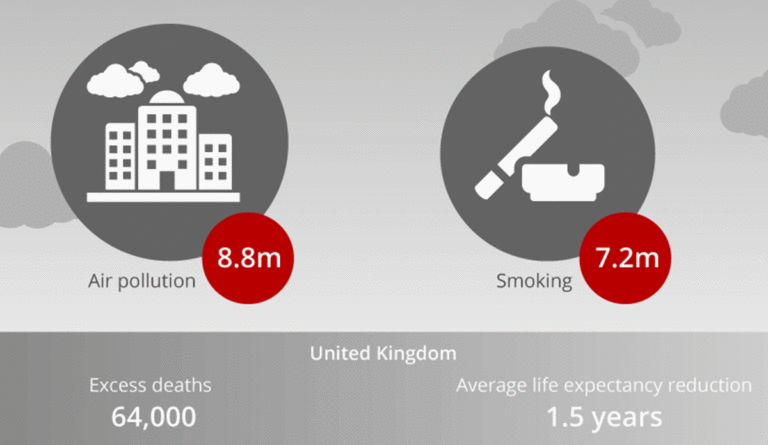Smoke or Breathe?
Exposure to air pollution is less noticeable than exposure to smoking, but an increasing number of people are subject to air pollution's harmful effects.

Read Time: 2 minutes
Published:
Air pollution now kills more people than smoking. In 2015, ambient air pollution caused 8.8 million deaths whereas smoking was responsible for 7.2 million deaths globally.
Ambient or outdoor air pollution contains fine particles (less than 2.5 micrometers in diameter, also known as PM2.5) emanating from fossil fuel, plant or animal materials used for heat production, and emissions from factories, agriculture, and wind-blown dust.
Chronic exposure to high levels of PM2.5 advances progression of non-communicable diseases such as hypertension, diabetes, and atherosclerosis—conditions that often prove fatal if left untreated. In fact, ambient air pollution accounts for approximately 29% of lung cancer deaths, 43% of COPD deaths, 25% of ischemic heart disease deaths, and 24% of stroke deaths.
Exposure to outdoor air-pollution is less noticeable than exposure to smoking, but an increasing amount of people around the world are subject to its harmful effects. In the United States, 141 million people are exposed to unhealthy levels of air pollution. Additionally, more than 4 in 10 Americans live in counties that have unhealthy ozone and high levels of PM2.5.
The Lancet Commission on Pollution and Health was also established to raise global awareness of pollution and mobilize necessary resources. The Commission’s efforts have led to the creation of the Global Observatory on Pollution and Health—a center tasked with tracking efforts to control pollution and prevent pollution-related diseases.
Databyte via Armstrong, Martin, and Felix Richter. “Infographic: Air Pollution Kills More People Than Smoking.” Statista Infographics, 2019.



